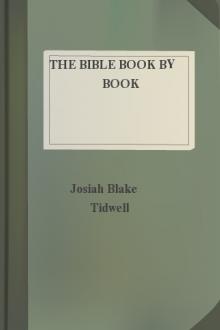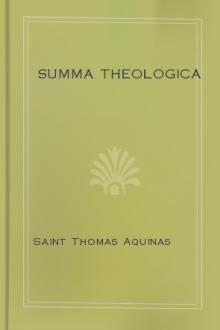Genre Philosophy. Page - 16

ach expresses eternal and infinite essentiality. Explanation-I say absolutely infinite, not infinite after its kind : for, of a thing infinite only after its kind, infinite attributes may be denied ; but that which is absolutely infinite, contains in its essence whatever expresses reality, and involves no negation.
VII. That thing is called free, which exists solely by the necessity of its own nature, and of which the action is determined by itself alone. On the other hand, that thing is necessary, or rather constrained, which is determined by something external to itself to a fixed and definite method of existence or action.
VIII. By eternity, I mean existence itself, in so far as it is conceived necessarily to follow solely from the definition of that which is eternal. Explanation-Existence of this kind is conceived as an eternal truth, like the essence of a thing, and, therefore, cannot be explained by means of continuance or time, though continuance may be conceived without a beginning or en

cordingly: (1) The Strong one used 225 times in theOld Testament; (2) The Strong one as an object of worship; (3) TheStrong one who is faithful and, therefore, to be trusted and obeyed.This last is a plural term and is used 2300 times in the OldTestament. It is the name used when God said. "Let us make man" and"God created man in his own image," etc., Gen. 1:26-27. It was by thisname that God the Trinity covenanted for the good of man before manwas created.
2. LORD. Small capitals in the old version and translated Jehovah inthe in the revised translation. It means: (1) The self-existing onewho reveals himself; (2) God as Redeemer. It was under this name thathe sought man after the fall and clothed him with skins. Gen. 3:9-17;(3) God who makesand keeps his covenants. It is used more than 100times in connection with the covenants, as in Jer. 31:31-34 where hepromises a new covenant.
3. Lord. Small letters except the L and always denotes God as Masterin his relation to us as servants. The

ave himself from cipherdom, find an affirmative position. His thousand and three affairs of gallantry, after becoming, at most, two immature intrigues leading to sordid and prolonged complications and humiliations, have been discarded altogether as unworthy of his philosophic dignity and compromising to his newly acknowledged position as the founder of a school. Instead of pretending to read Ovid he does actually read Schopenhaur and Nietzsche, studies Westermarck, and is concerned for the future of the race instead of for the freedom of his own instincts. Thus his profligacy and his dare-devil airs have gone the way of his sword and mandoline into the rag shop of anachronisms and superstitions. In fact, he is now more Hamlet than Don Juan; for though the lines put into the actor's mouth to indicate to the pit that Hamlet is a philosopher are for the most part mere harmonious platitude which, with a little debasement of the word-music, would be properer to Pecksniff, yet if you separate the real hero, inartic

that faith is likewise about propositions; so that its object is something complex.
I answer that, The thing known is in the knower according to the mode of the knower. Now the mode proper to the human intellect is to know the truth by synthesis and analysis, as stated in the First Part (Q. 85, A. 5). Hence things that are simple in themselves, are known by the intellect with a certain amount of complexity, just as on the other hand, the Divine intellect knows, without any complexity, things that are complex in themselves.
Accordingly the object of faith may be considered in two ways. First, as regards the thing itself which is believed, and thus the object of faith is something simple, namely the thing itself about which we have faith. Secondly, on the part of the believer, and in this respect the object of faith is something complex by way of a proposition.
Hence in the past both opinions have been held with a certain amount of truth.
Reply Obj. 1: This argument consider

secure society against oneof the most destructive but insidious institutions of popery; Americanfemales, an appeal to them of the most solemn kind, to beware ofConvents, and all who attempt to inveigle our unsuspecting daughtersinto them, by the secret apparatus of Jesuit schools. The author of thisbook was a small, slender, uneducated, and persecuted young woman, whosought refuge in our country without a protector; but she showed theresolution and boldness of a heroine, in confronting her powerfulenemies in their strong hold, and proved, by the simple force of truth,victorious in the violent conflicts which were waged against her by theRomish hierarchy of America and the popular press of the United States.
The publishers have thought the present an opportune period to placethis work again in the hands of American readers, with such information,in a preface, as is necessary to acquaint readers of the present daywith the leading circumstances attending and succeeding its originalpublication.

table. Our next chapter, therefore, will be concerned with the reasons for supposing that there is a real table at all.
Before we go farther it will be well to consider for a moment what it is that we have discovered so far. It has appeared that, if we take any common object of the sort that is supposed to be known by the senses, what the senses immediately tell us is not the truth about the object as it is apart from us, but only the truth about certain sense-data which, so far as we can see, depend upon the relations between us and the object. Thus what we directly see and feel is merely 'appearance', which we believe to be a sign of some 'reality' behind. But if the reality is not what appears, have we any means of knowing whether there is any reality at all? And if so, have we any means of finding out what it is like?
Such questions are bewildering, and it is difficult to know that even the strangest hypotheses may not be true. Thus our familiar table, which has roused but the slig

gh the subject consciously wishes to be hypnotized. Unconsciously, there may be a poor interrelationship with the hypnotist which can create an unfavorable climate for hypnosis. When this is the case, the subject doesn't respond until such time that he relates well to the hypnotist. Even the most calculated procedures will fail until a positive transference relationship is established. I am sure that you sometimes have said, "For some reason I don't like that person." If pressed for an answer, you'll usually reply, "I can't explain it, but I just have a feeling about him." Actually, your subconscious reactions are influencing your thinking and you "feel" a certain way. The same thing takes place in business transactions. You either like or dislike the proposition presented to you. You may say, "I have a certain feeling about this deal." You may not be conscious of the reasons, but your subconscious has reacted automatically because of previous experience along similar lines.
In giving you some insight

nt pasture for dairy-farming and water-power for both tramway and funicular, and where the necessary capital could be borrowed; and the other one hunted about for marks of stratification and upheaval, and ransacked his memory for historical data about the various tribes originally inhabiting that country.
"I suppose you're a painter and regretting you haven't brought your sketching materials?" said the scientific man, always interested in the causes of phenomena, even such trifling ones as a man remaining quiet before a landscape.
"I reckon you are one of those literary fellows, and are planning out where you can use up a description of this place"--corrected the rapid insight of the practical man, accustomed to weigh people's motives in case they may be turned to use.
"I am not a painter, and I'm not a writer"--exclaimed the third traveller, "and I thank Heaven I'm not! For if I were I might be trying to engineer a picture or to match adjectives, instead of merely enjoy

ti, which is intouch with each one of the four globes and a part of it. Thesame is true of any aggregation of prakriti--of the earth itselfand of all things in it, including man. As there are fouratoms in each one, so there are four earths, four globes,consubstantial, one for each of the four elements, and in touchwith it. One is formed of prakritic atoms--the globe we know;another, of the ether forming their envelopes; another, of theprana envelopes of ether, and a fourth of the manasa around thepranic atom. They are not "skins"; they are consubstantial.And what is true of atoms or globes is true of animals. Each hasfour "material" bodies, with each body on the corresponding globe--whether of the earth or of the Universe. This is the physicalbasis of the famous "chain of seven globes" that is such astumbling-block in Hindu metaphysics. The spirit passes throughfour to get in and three to get out--seven in all. The Hinduunderstands without explanation. He understands his physics.

veloped and brought forth, like the culture of that obstinate but beautiful flower, the orchid. To allow it to remain dormant is to place one's self in obscurity, to trample on one's ambition, to smother one's faculties. To develop it is to individualize all that is best within you, and give it to the world. It is by an absolute knowledge of yourself, the proper estimate of your own value."
"There is hardly a reader," says an experienced educator, "who will not be able to recall the early life of at least one young man whose childhood was spent in poverty, and who, in boyhood, expressed a firm desire to secure a higher education. If, a little later, that desire became a declared resolve, soon the avenues opened to that end. That desire and resolve created an atmosphere which attracted the forces necessary to the attainment of the purpose. Many of these young men will tell us that, as long as they were hoping and striving and longing, mountains of difficulty rose before them; but that when they fashione